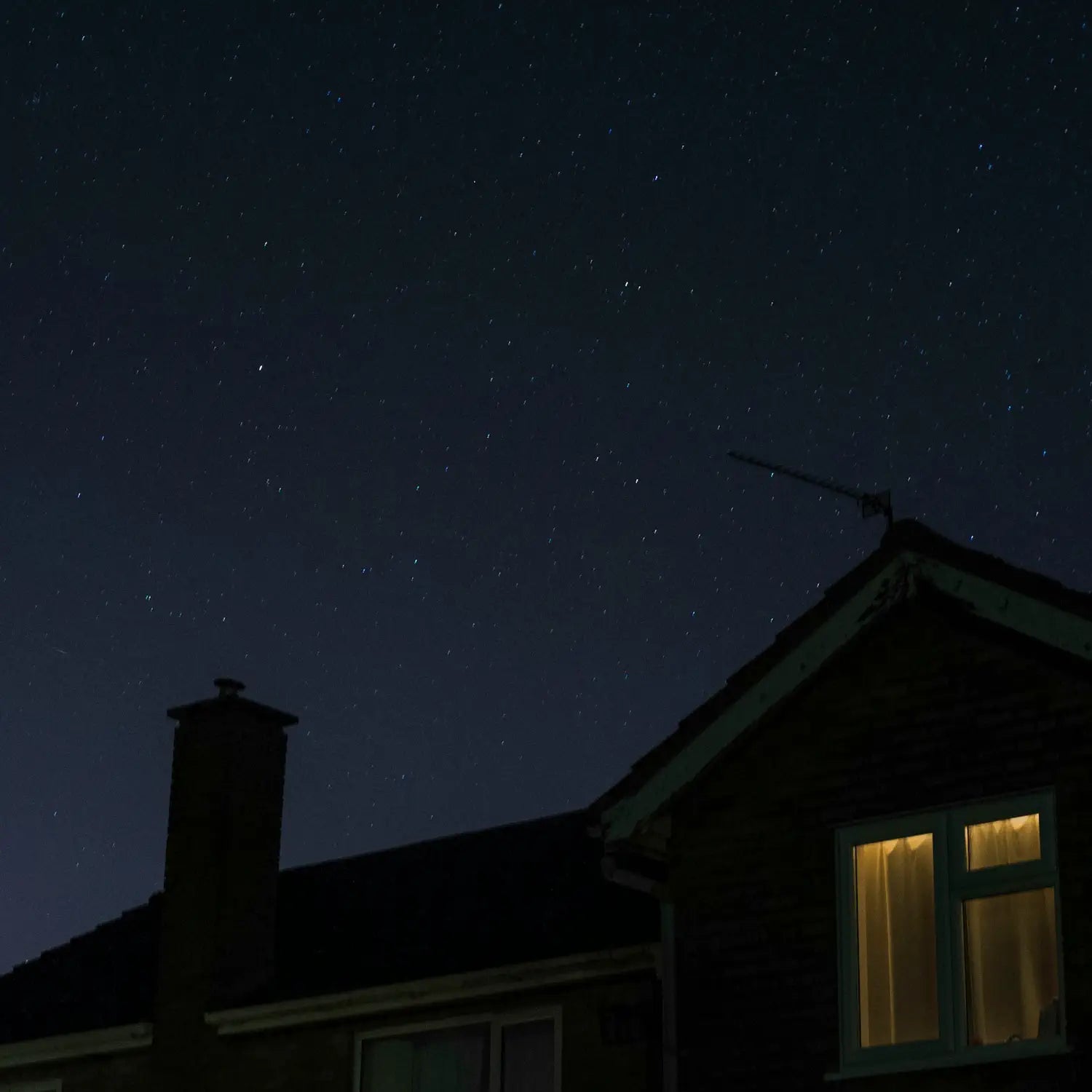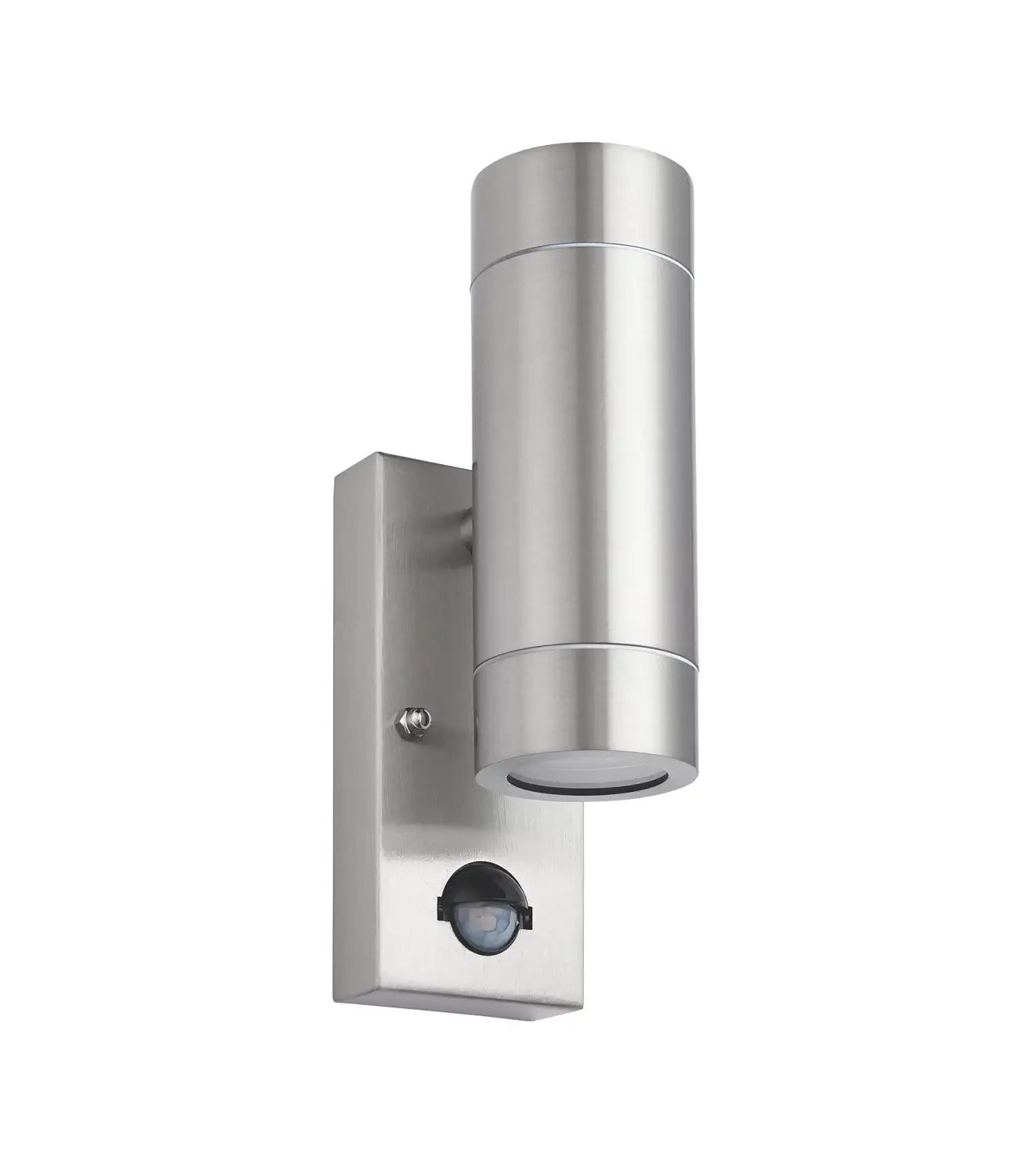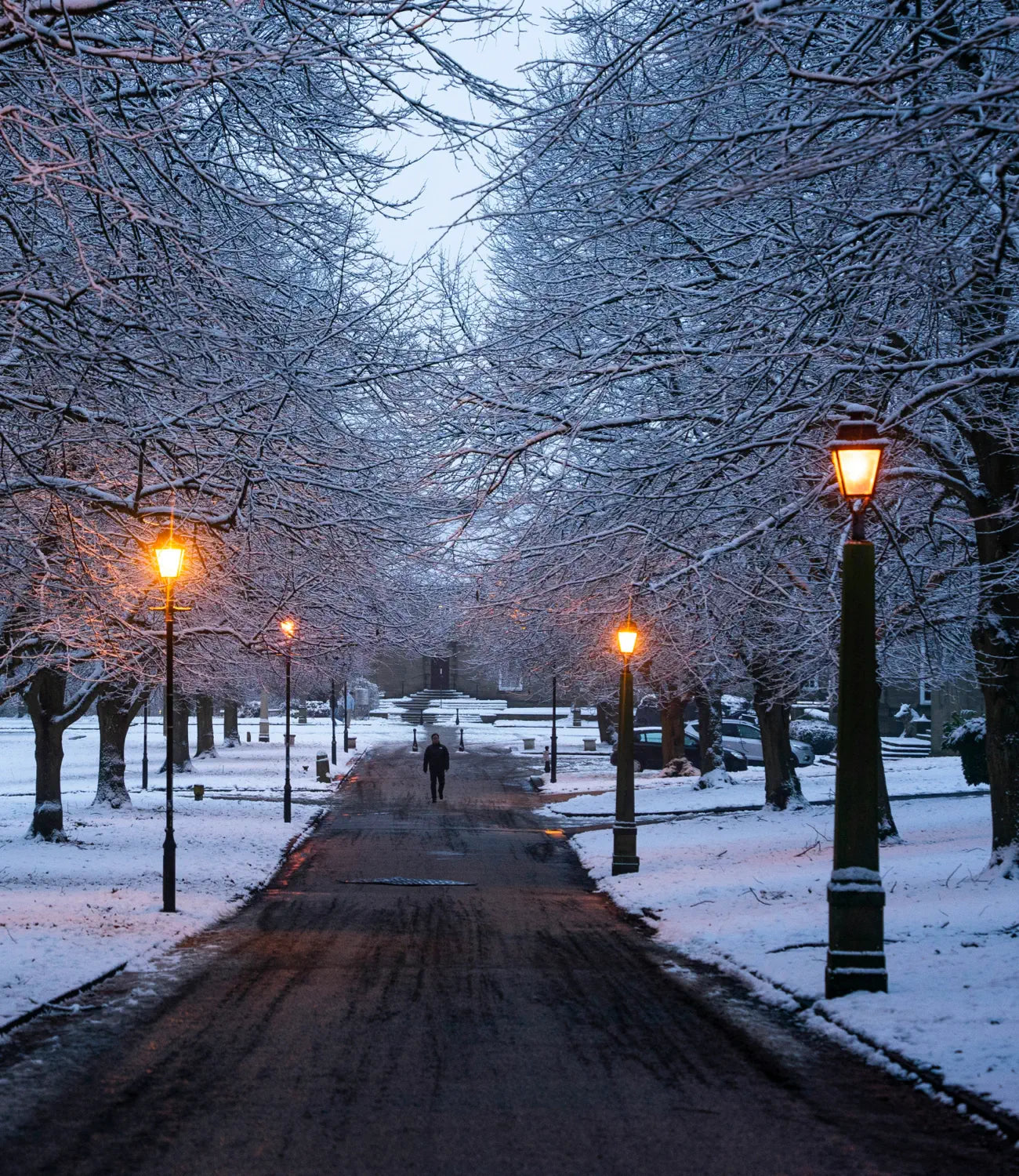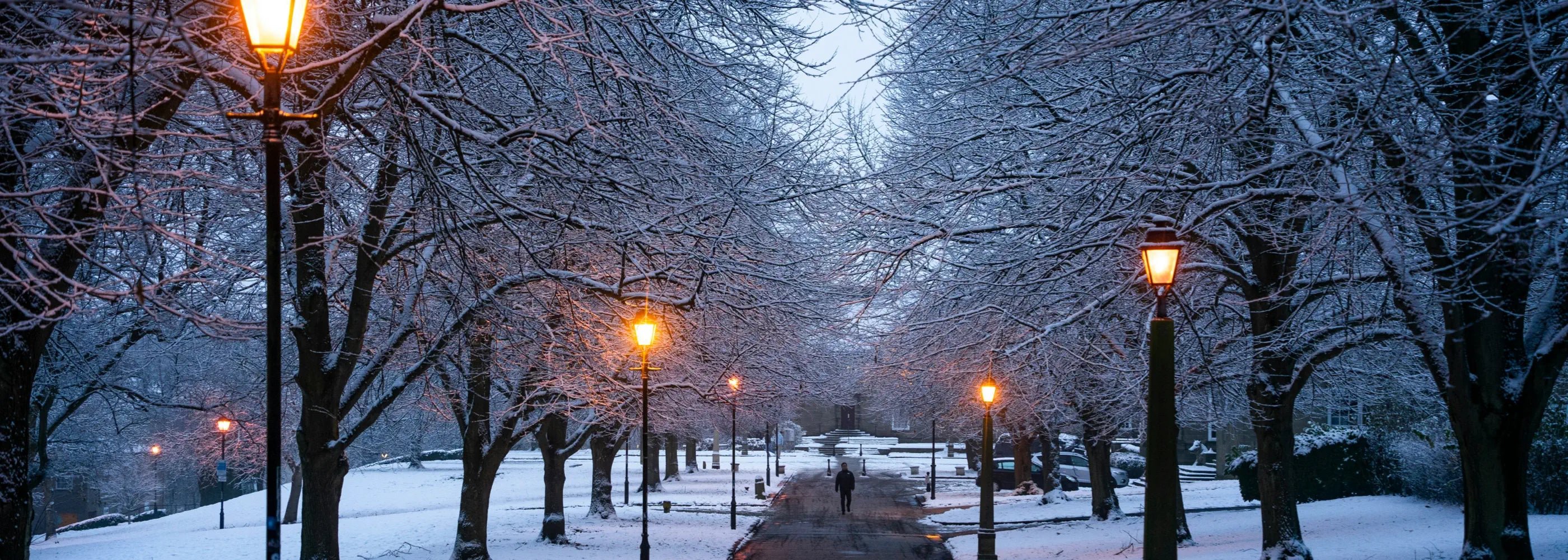What is Light Pollution?
Light pollution refers to the excessive or misdirected artificial light that disrupts natural darkness. It includes:
- Glare: Excessive brightness causing visual discomfort.
- Skyglow: The brightening of the night sky, particularly over urban areas, obscuring stars.
- Light Trespass: Light spilling into areas where it is not needed or wanted, such as into homes or natural habitats.
Globally, 83% of people live under light-polluted skies, and poorly designed lighting contributes to at least 30% of wasted outdoor light, resulting in energy inefficiency and increased atmospheric pollution.
How Light Pollution Affects Wildlife
Nocturnal Insects
- Navigation Disruption: Artificial lights confuse nocturnal insects like moths, which navigate by natural light sources such as the moon. Disoriented insects expend energy unnecessarily, leaving them vulnerable to predators and less effective as pollinators.
- Fatal Attraction: Bright, unshielded lights can trap insects, killing hundreds per night. This phenomenon reduces insect populations critical to ecosystems.
Bats
- Hunting Disruption: Bats rely on darkness to hunt. While some species take advantage of light to catch prey, this behavior exposes them to predators and reduces food availability for other nocturnal species.
- Habitat Fragmentation: Brightly lit areas act as barriers, limiting bats’ natural range and forcing them to avoid otherwise suitable habitats.
Birds
- Migration and Navigation: Many birds use the moon and stars to navigate during migrations. Artificial light can disorient them, causing millions of bird deaths each year due to collisions with buildings or exhaustion.
- Sleep Disruption: Bright lighting can disturb resting birds, forcing them to forage at night and reducing their energy for vital activities like breeding and migration.
Plants and Ecosystems
Seasonal Cycles: Light pollution disrupts natural seasonal cycles in trees, delaying leaf shedding in autumn and budding in spring. This alters the timing of entire ecosystems, affecting insects, birds, and other animals dependent on these cycles.
Amphibians
- Temporary Blindness: Bright security lights can temporarily blind frogs and other amphibians, increasing their vulnerability to predators.
- Mating Behaviours: Artificial light can interfere with mating signals, reducing reproductive success.

THE NIGHT SKY...
What Are We Losing?
Under natural conditions, around 2,500 stars are visible to the naked eye. However, in today’s suburbs, only 200–300 stars are visible, and in cities, fewer than a dozen can be seen due to skyglow. This loss not only diminishes human experiences but also affects nocturnal navigation for wildlife.
Warm White Lights: Opt for lights with color temperatures of 3,000K or lower. Warm white tones are less disruptive to wildlife, particularly nocturnal insects and birds.
Solar-Powered Lights: These are cost-effective, energy-efficient, and emit softer, low-intensity light ideal for garden spaces.
Avoid Overly Bright Fixtures: Choose low-lumen fixtures for areas that require ambient lighting, such as patios or pathways. Reserve brighter lights for essential areas like driveways.
Install Light Shields or Hoods: These prevent light from spilling upwards, reducing skyglow and glare.
Focus Light Where Needed: Position lights downward and angle them to illuminate only necessary areas, such as pathways or seating areas, without lighting up unnecessary surroundings.
Use Low Heights: Install fixtures closer to the ground to minimise spread into surrounding areas.

Timers: Program lights to turn on at dusk and off at a designated time, ensuring they aren’t active all night. This is particularly effective for decorative lighting.
Motion Sensors: Security and utility lights with motion detectors activate only when movement is detected, conserving energy and limiting their impact on wildlife.

- Adopt a “Lights Out” Policy: Make it a habit to switch off non-essential lights before going to bed.
- Part-Night Lighting: Work with neighbours or community groups to create “dark zones” in shared areas by turning off lights after midnight.

Use Dark-Sky Friendly Fixtures: Choose lights that are specifically designed to minimise upward light.
Engage in Community Efforts: Advocate for local councils to implement lighting policies, such as part-night street lighting or shielded public fixtures.
Advocate for local councils to adopt policies that reduce unnecessary lighting in public spaces. The Czech Republic became the first country to enact light pollution laws, requiring shields on all outdoor fixtures.

Designate Wildlife-Friendly Areas: Leave some sections of your garden unlit to create safe spaces for nocturnal animals like bats, hedgehogs, and glow worms.
Limit Decorative Lighting: Enjoy your garden in its natural state at night with moonlight or handheld torches instead of relying on artificial lighting.
Warm White Lights: Opt for lights with color temperatures of 3,000K or lower. Warm white tones are less disruptive to wildlife, particularly nocturnal insects and birds.
Solar-Powered Lights: These are cost-effective, energy-efficient, and emit softer, low-intensity light ideal for garden spaces.
Avoid Overly Bright Fixtures: Choose low-lumen fixtures for areas that require ambient lighting, such as patios or pathways. Reserve brighter lights for essential areas like driveways.
Install Light Shields or Hoods: These prevent light from spilling upwards, reducing skyglow and glare.
Focus Light Where Needed: Position lights downward and angle them to illuminate only necessary areas, such as pathways or seating areas, without lighting up unnecessary surroundings.
Use Low Heights: Install fixtures closer to the ground to minimise spread into surrounding areas.
Timers: Program lights to turn on at dusk and off at a designated time, ensuring they aren’t active all night. This is particularly effective for decorative lighting.
Motion Sensors: Security and utility lights with motion detectors activate only when movement is detected, conserving energy and limiting their impact on wildlife.
- Adopt a “Lights Out” Policy: Make it a habit to switch off non-essential lights before going to bed.
- Part-Night Lighting: Work with neighbours or community groups to create “dark zones” in shared areas by turning off lights after midnight.
Use Dark-Sky Friendly Fixtures: Choose lights that are specifically designed to minimise upward light.
Engage in Community Efforts: Advocate for local councils to implement lighting policies, such as part-night street lighting or shielded public fixtures.
Advocate for local councils to adopt policies that reduce unnecessary lighting in public spaces. The Czech Republic became the first country to enact light pollution laws, requiring shields on all outdoor fixtures.
Designate Wildlife-Friendly Areas: Leave some sections of your garden unlit to create safe spaces for nocturnal animals like bats, hedgehogs, and glow worms.
Limit Decorative Lighting: Enjoy your garden in its natural state at night with moonlight or handheld torches instead of relying on artificial lighting.




The Importance of Dark Skies
Wildlife Conservation
Foraging and Hunting: Many nocturnal species have evolved to rely on darkness for hunting and avoiding predators. Bright lights reduce their feeding windows, increasing competition for resources.
Natural Behaviours: Maintaining dark skies ensures that animals can carry out critical behaviours like navigation, mating, and migration without disruption.
Ecosystem Health
Interconnected Cycles: Dark skies preserve natural cycles such as pollination and predation, preventing mismatches that could destabilise ecosystems.
Aquatic Life: Artificial lighting near water can mislead aquatic insects, causing them to lay eggs on non-aquatic surfaces, disrupting their reproduction.
Human Experience
Stargazing: In natural darkness, the human eye can see around 2,500 stars unaided. Urban areas with severe light pollution reduce visibility to fewer than 12 stars, robbing us of the awe-inspiring night sky.
Circadian Rhythms: Excessive artificial light disrupts human sleep patterns, leading to health issues such as insomnia and stress.
Foraging and Hunting: Many nocturnal species have evolved to rely on darkness for hunting and avoiding predators. Bright lights reduce their feeding windows, increasing competition for resources.
Natural Behaviours: Maintaining dark skies ensures that animals can carry out critical behaviours like navigation, mating, and migration without disruption.
Interconnected Cycles: Dark skies preserve natural cycles such as pollination and predation, preventing mismatches that could destabilise ecosystems.
Aquatic Life: Artificial lighting near water can mislead aquatic insects, causing them to lay eggs on non-aquatic surfaces, disrupting their reproduction.
Stargazing: In natural darkness, the human eye can see around 2,500 stars unaided. Urban areas with severe light pollution reduce visibility to fewer than 12 stars, robbing us of the awe-inspiring night sky.
Circadian Rhythms: Excessive artificial light disrupts human sleep patterns, leading to health issues such as insomnia and stress.
How Outdoor Lights UK Promotes Responsible Lighting Practices
At Outdoor Lights UK, we aim to empower our customers with the tools and knowledge to use outdoor lighting responsibly. While we offer solutions like solar-powered and shielded fixtures to reduce environmental impact, the true difference lies in how these products are installed and used. Here’s how we promote good practices:
Use our installation guides to position lights correctly, avoid glare, and focus light only where needed, while ensuring they’re placed at appropriate heights to decrease the impact on wildlife.
Choose appropriate bulbs with low colour temperatures and wattage to minimise disruption to nocturnal species, and pair them with fixtures equipped with motion sensors and timers to reduce unnecessary lighting.
Highlight products with shields or hoods to reduce skyglow and light spill, and encourage maintaining some unlit garden areas to support wildlife habitats.
Through our blog posts and guides, we provide information on the ecological impact of light pollution and how customers can make better choices to protect the environment.
While our products are designed with quality and efficiency in mind, the greatest impact comes from responsible usage and thoughtful lighting choices. Together, we can create beautiful outdoor spaces that respect wildlife and the environment.
The UK’s Night Night Skies
Despite its beauty, England struggles with significant light pollution:
- Only 21.7% of England has pristine night skies free from light pollution.
- In comparison, 57% of Wales and 77% of Scotland boast unspoiled skies, reflecting the stark differences in urbanization and lighting practices.
(Source: CPRE's "Night Blight" report)
This fact underscores the importance of implementing responsible lighting practices to protect what remains of the UK’s dark skies.
21.7%
of England's skies are free from light pollution
57%
of the sky in Wales is free from light pollution.
77%
of Scotland's skies are free from light pollution.
In Conclusion
Reducing light pollution is essential for preserving the natural balance of wildlife and creating healthier environments for all species, including humans. With thoughtful lighting practices and eco-conscious products, we can enjoy the beauty of our gardens without compromising the environment.
At Outdoor Lights UK, we’re here to help you make informed, wildlife-friendly choices. Explore our range of low-impact lights today and join us in protecting our precious dark skies.


